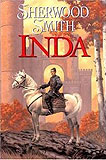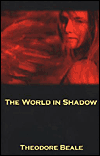
The Sandman Vol. 3: Dream Country, by Neil Gaiman
Book Review by Joshua Palmatier
Have you read this book?
First off, I'm wondering why they didn't take that one issue from The Doll's House
(the one where death lets the one character live and he meets up with
Dream every 100 years in the same bar) and include it in this one. This
is short, so could have used another issue, and the other kind of
interrupted the main storyline. I'm sure they just included the issues
in the order in which they were released, but I still think it could
have been moved here and only the utter purists that need a life would
have really protested with any heart. But anyway . . . *grin*
Calliope: OK, the bezoar is purely disgusting. This is why I'm not a doctor. But anyway, we move on to the main story: writer has writer's block and uses the bezoar to get a muse from another writer who only wants to see one of his poems/stories back in print. Being a writer, I can see where all of this comes from. Of course Gaiman pushes it to its farthest extremes. We not only get the muse, trapped by the original writer and held captive, we get the depravity of the writer himself as he abuses her, when as far as we can tell he doesn't get anything "extra" from the muse with the abuse. He does it for his own amusement. So the two writer characters are disgusting and not really people we like. And the muse doesn't really have much of her own character. She seems to be there strictly to generate pity in the reader. At least, I never felt any real connection to her, aside from sympathy for her situation. Buy in any case, Dream comes at her call (with the fates' help) and appears to sympathize with her and lets the madness begin with the writer, until the writer sets her free.
I have to say that I saw the ending/plot of this story practically from the first page, so this wasn't much of a surprise to me. It seemed kind of generic. Maybe it wasn't at the time it was published though. And I found myself wondering why the muse couldn't do this to the writer herself. I assume that it was part of the contract, but it seems to me that it would have been more powerful if SHE had been able to cause the madness that would force the writer to release her. At least it would have made Calliope out as a stronger character. I don't remember any mention of her NOT being able to do this, but I didn't go back and look either. And of course, if Calliope could do it herself, then there was no need of the Sandman at all, so . . . Anyways, a nice story. Art was good, but I didn't notice anything particularly spectacular or bad as I was reading.
But still, the bezoar is disgusting.
A Dream of a Thousand Cats: OK, I'm not much of a cat person, so the cat aspect of this had no appeal to me. I'm sure it rocked the cat-people's worlds though. *grin* What I liked here was the depiction of the cruelty of humans and our general obliviousness of what our pets may actually be thinking/feeling/doing, on the assumption that they aren't really thinking/feeling/doing anything except amusing us. So the killing of the kittens was the emotional high point of the story for me. The rest of the story--the idea that cats once ruled all and the dream of a thousand (and more) men changed the very aspect of the universe to our POV--presented an interesting idea . . . but that was about it. So in the end, it became just a "cute" story for me, one that made me really think only during the killing of the kitten part.
A Midsummer Night's Dream: OK, here's another reason to include that odd issue from The Doll's House here: it directly relates to this story. But anyway . . . This issue supposedly won the World Fantasy Award that year. So I read this with perhaps more interest than the other stories. However, I'm failing to see what it is about the issue that made it that much better than everything else that probably came out that year. But I'm finding this is common with the stories and novels that win the big awards--when I read them, I'm like, what am I missing? Now, here I may be missing something regarding the artwork. If so, please enlighten me.
As for the story, I thought it was cool and interesting, certainly more interesting than the cat story before it. But again, it didn't seem to be a HUGE idea. Dream inspires Shakespeare, who writes a play about the fairy, and Dream makes it possible for the fairy to see the play. It's not a new idea. The best part about the whole issue in my opinion is actually the sub-fairies that we see commenting on the play itself, such as Peaseblossom and whatnot. Their interactions were the most interesting to me overall, and were the most amusing. I got a good sense that these fairy actually think differently than humans, besides looking differently as well. The artists did a great job of making them completely different (I especially like Peaseblossom). I also like some of the art in the scenes. The party about asking for gold and getting gold blossoms at the end . . . that kind of seemed "thrown in" to me, not something integral to the plot. The only other thing that was interesting to me was Shakespeare's son and the hints that are dropped that the fairy may claim him and that Shakespeare is too caught up in his plays to really pay attention to him. THAT was interesting because it had to do with character. And I'm glad they included the little "this is what happened to the son" blip at the end. Normally I don't like these kinds of things, but here I wanted to know. So out of all of the stories in this part, this is the most interesting and the most complex.
Facade: Now, this story was interesting because it was all about character. We see a superhero after the fact, one who can't deal with her own powers and how to integrate them into her life. Or to make her life out of them. Very interesting powers and the masks idea is spectacular. Which is also why I'm disappointed in the story. I wanted to know more about this one and wished it had been longer. I wanted to know more about this character and how she came to this place, what drove her to this situation. The idea that she simply wants to die needed more of an explanation for me, although I thought there was enough here to make the story work at its barest level. I certainly got her desperation for contact and for a normal life from the first part of the issue. And the idea that she's trapped and CAN'T kill herself is interesting as well. So a very intriguing idea and setup, and I like that it's Death that shows up here, not Dream, to deal with the situation. I felt that the solution to the situation was also appropriate given the circumstances. So overall, I was satisfied, although again I still wanted a little more here.
So, overall, the Midsummer Night's Dream story was the most focused and "put together," although I think the ideas of the Facade story were much more powerful and interesting. The first two stories were simply OK to me.
The Script: And I was initially VERY interested in seeing how the comics come into being and how Neil Gaiman works . . . but I found that I couldn't read through the entire script. I got the gist of what he does in the first 5 pages and after that the rest seemed to be more of the same, so I stopped reading. It was interesting to know how detailed he is about the story. He doesn't just give the dialogue and the plot, he also plans out the layout to a large degree. I don't think I could do that. I'd give the artist much more leeway in the layout and details realm, and just provide the basic plot and dialogue.
Calliope: OK, the bezoar is purely disgusting. This is why I'm not a doctor. But anyway, we move on to the main story: writer has writer's block and uses the bezoar to get a muse from another writer who only wants to see one of his poems/stories back in print. Being a writer, I can see where all of this comes from. Of course Gaiman pushes it to its farthest extremes. We not only get the muse, trapped by the original writer and held captive, we get the depravity of the writer himself as he abuses her, when as far as we can tell he doesn't get anything "extra" from the muse with the abuse. He does it for his own amusement. So the two writer characters are disgusting and not really people we like. And the muse doesn't really have much of her own character. She seems to be there strictly to generate pity in the reader. At least, I never felt any real connection to her, aside from sympathy for her situation. Buy in any case, Dream comes at her call (with the fates' help) and appears to sympathize with her and lets the madness begin with the writer, until the writer sets her free.
I have to say that I saw the ending/plot of this story practically from the first page, so this wasn't much of a surprise to me. It seemed kind of generic. Maybe it wasn't at the time it was published though. And I found myself wondering why the muse couldn't do this to the writer herself. I assume that it was part of the contract, but it seems to me that it would have been more powerful if SHE had been able to cause the madness that would force the writer to release her. At least it would have made Calliope out as a stronger character. I don't remember any mention of her NOT being able to do this, but I didn't go back and look either. And of course, if Calliope could do it herself, then there was no need of the Sandman at all, so . . . Anyways, a nice story. Art was good, but I didn't notice anything particularly spectacular or bad as I was reading.
But still, the bezoar is disgusting.
A Dream of a Thousand Cats: OK, I'm not much of a cat person, so the cat aspect of this had no appeal to me. I'm sure it rocked the cat-people's worlds though. *grin* What I liked here was the depiction of the cruelty of humans and our general obliviousness of what our pets may actually be thinking/feeling/doing, on the assumption that they aren't really thinking/feeling/doing anything except amusing us. So the killing of the kittens was the emotional high point of the story for me. The rest of the story--the idea that cats once ruled all and the dream of a thousand (and more) men changed the very aspect of the universe to our POV--presented an interesting idea . . . but that was about it. So in the end, it became just a "cute" story for me, one that made me really think only during the killing of the kitten part.
A Midsummer Night's Dream: OK, here's another reason to include that odd issue from The Doll's House here: it directly relates to this story. But anyway . . . This issue supposedly won the World Fantasy Award that year. So I read this with perhaps more interest than the other stories. However, I'm failing to see what it is about the issue that made it that much better than everything else that probably came out that year. But I'm finding this is common with the stories and novels that win the big awards--when I read them, I'm like, what am I missing? Now, here I may be missing something regarding the artwork. If so, please enlighten me.
As for the story, I thought it was cool and interesting, certainly more interesting than the cat story before it. But again, it didn't seem to be a HUGE idea. Dream inspires Shakespeare, who writes a play about the fairy, and Dream makes it possible for the fairy to see the play. It's not a new idea. The best part about the whole issue in my opinion is actually the sub-fairies that we see commenting on the play itself, such as Peaseblossom and whatnot. Their interactions were the most interesting to me overall, and were the most amusing. I got a good sense that these fairy actually think differently than humans, besides looking differently as well. The artists did a great job of making them completely different (I especially like Peaseblossom). I also like some of the art in the scenes. The party about asking for gold and getting gold blossoms at the end . . . that kind of seemed "thrown in" to me, not something integral to the plot. The only other thing that was interesting to me was Shakespeare's son and the hints that are dropped that the fairy may claim him and that Shakespeare is too caught up in his plays to really pay attention to him. THAT was interesting because it had to do with character. And I'm glad they included the little "this is what happened to the son" blip at the end. Normally I don't like these kinds of things, but here I wanted to know. So out of all of the stories in this part, this is the most interesting and the most complex.
Facade: Now, this story was interesting because it was all about character. We see a superhero after the fact, one who can't deal with her own powers and how to integrate them into her life. Or to make her life out of them. Very interesting powers and the masks idea is spectacular. Which is also why I'm disappointed in the story. I wanted to know more about this one and wished it had been longer. I wanted to know more about this character and how she came to this place, what drove her to this situation. The idea that she simply wants to die needed more of an explanation for me, although I thought there was enough here to make the story work at its barest level. I certainly got her desperation for contact and for a normal life from the first part of the issue. And the idea that she's trapped and CAN'T kill herself is interesting as well. So a very intriguing idea and setup, and I like that it's Death that shows up here, not Dream, to deal with the situation. I felt that the solution to the situation was also appropriate given the circumstances. So overall, I was satisfied, although again I still wanted a little more here.
So, overall, the Midsummer Night's Dream story was the most focused and "put together," although I think the ideas of the Facade story were much more powerful and interesting. The first two stories were simply OK to me.
The Script: And I was initially VERY interested in seeing how the comics come into being and how Neil Gaiman works . . . but I found that I couldn't read through the entire script. I got the gist of what he does in the first 5 pages and after that the rest seemed to be more of the same, so I stopped reading. It was interesting to know how detailed he is about the story. He doesn't just give the dialogue and the plot, he also plans out the layout to a large degree. I don't think I could do that. I'd give the artist much more leeway in the layout and details realm, and just provide the basic plot and dialogue.
|
Click here to buy The Sandman Vol. 3: Dream Country, by Neil Gaiman on Amazon
|
The Sandman Vol. 3: Dream Country, by Neil Gaiman on Amazon

| More Books You Might Like |
Comment on The Sandman Vol. 3: Dream Country, by Neil Gaiman
| Comments on The Sandman Vol. 3: Dream Country, by Neil Gaiman |
| There are no comments on this book. |




